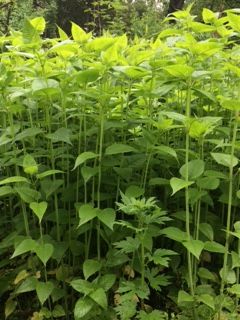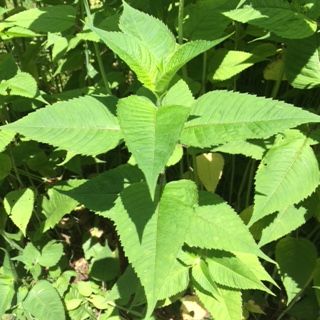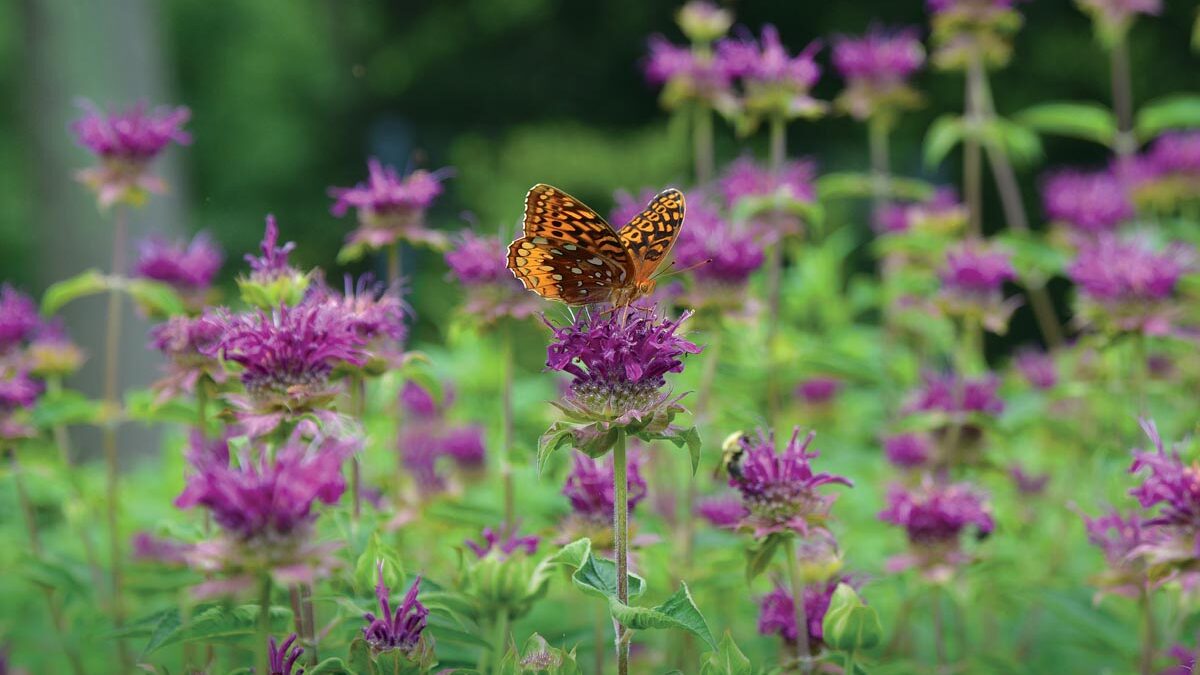
Last blog, I wrote about the red-flowered bee balm (Monarda didyma) and promised that I would write about the savory, wild bee balm (Monarda fistulosa). So as you can see pictured here–it is still green–though it will be covered with lavender blooms in the next month. It is about 4-feet tall now and could reach 5-to 6-feet when flowering. The shaggy-headed, purple-hued blooms last for at least a month to 6 weeks and attract pollinators of every kind in abundance.
Most of the monardas, other than the red-flowered M.didyma, are pungent and savory in flavor and so should be used in savory dishes rather than sweets. Monarda fistulosa, also referred to as purple bee balm and wild bergamot, contains carvacrol which gives it a spicy flavor similar to Greek oregano. The pungent, chopped leaves can be added to soups, stews, beans, marinades, tomato sauce, and with eggs, seafood or meat. Use it anywhere you might use oregano or savory. I like to chop it and scatter it over pizza, pasta and grain dishes.
Since I have it in abundance, I have been using it in lots of dishes lately. It makes a wicked salsa verde–I’ve combined it with parsley and cilantro leaves for a south-of-the-border salsa–and I’ve combined it with garlic mustard, wood sorrel and chickweed for a wild weeds salsa. Both were killer good. I added garlic and olive oil to both; nuts and/or parmesan are optional.
Another bonus of the bee balms and most likely where it gets its name, is that the leaves are good for relieving bee and wasp stings and insect bites. I have used it many times and it works, relieving the pain almost immediately and it reduces swelling and the eventual itch. You can take a few leaves and brusie them in your hands and rub them on the sting. I prefer a poultice–and when outdoors–I just chew up a few leaves and put them on the area and tie my bandana around it to hold the poultice in place. If you are near the house, you can always go inside and chop the leaves and apply them, wrapping with a clean cloth. Reapply as needed.
Many Native American tribes used it for colds and coughs, as well as stomach maladies, headaches and for skin problems. It has anti-inflammatory and antioxidant properties and has been used as a diuretic.
Besides attracting our pollinators and the culinary and medicinal uses of monarda, it is just plain gorgeous in the garden. This delightful and useful herb is in my top ten herbs to grow. However, I will give you a heads-up to beware as it is invasive. I moved a few volunteer plants to a bed along the driveway a few years back. It now stretches about 15 feet by 8 feet–remember it is a member of the mint family–so put it where you don’t mind it going wild.
Here is an article I wrote on the monardas last summer when they were in full bloom; take a look at what you can expect. /item/61576/monarda-spp




















Comments
Log in or create an account to post a comment.
Sign up Log in